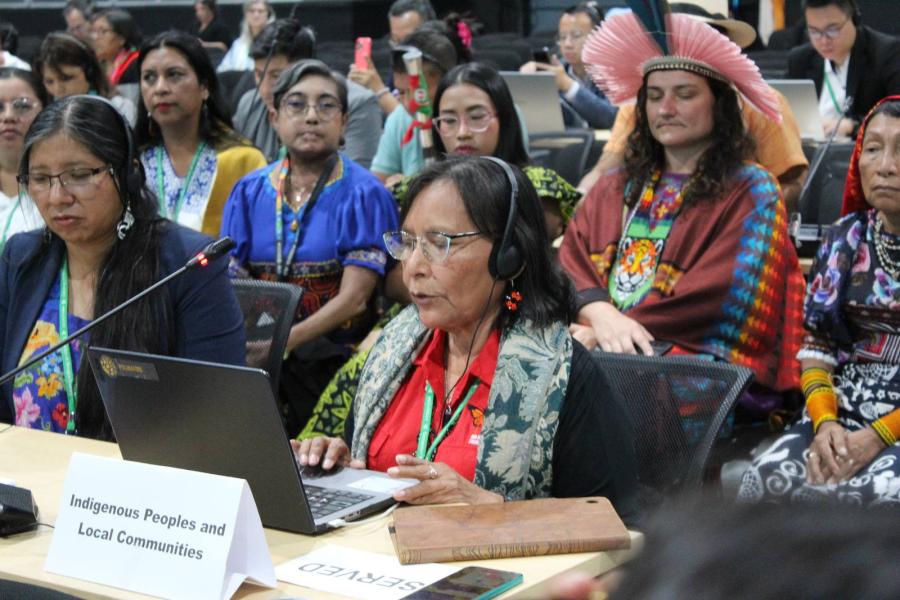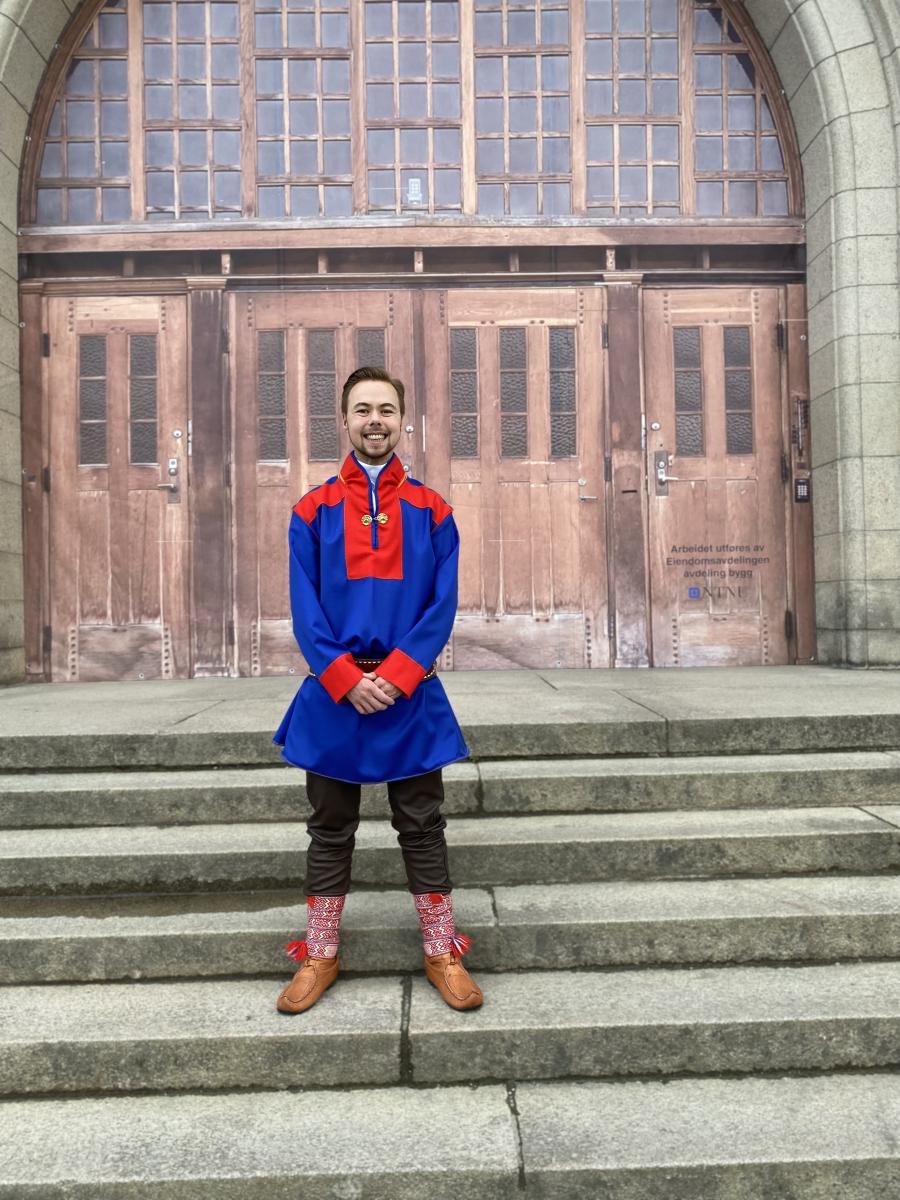Archaeology has widely documented that rainforests have been inhabited and cultivated for millenia, and greatly modified by human presence. In central Africa, the forest is occupied by two sets of communities, hunter-gatherers (commonly called Pygmies) now turning to agriculture, and traditional Bantu farmers. Both communities are exposed to common diseases, which are particularly diverse in the moist and hot ecosystem. But differing histories, cultures, and ways of life result in differences in health status. Today, hunter-gatherers, who are only a tiny minority among forest dwellers, are disadvantaged at the epidemiological and sociological level, and have to face an important and challenging transition to modernization.
Reality of the Rainforest
Tropical rainforests have long been viewed, by the West, as an immense reservoir of biodiversity—a wild and virgin milieu, with only a few indigenous tribes who, before the arrival of the Europeans, were living happily and in equilibrium in an abundant, untouched paradise. Reality is somewhat different. In Under the Canopy: the Archaeology of Tropical Rain Forests, Julio Mercader showed that archaeological research, though much more difficult in forests than in open areas, has demonstrated human presence for more than 40 millenia. Moreover, agriculture in tropical forests started more than 3,000 years ago, and botanists have shown how much cultivation has modified these forests. Some botanists consider rainforests more as gardens than jungles. For an experienced ecologist, many tree species of now unhabited areas can be recognized as remnants of past occupation.
What researchers can agree on is that wild resources cannot sustain the life of large human communities in tropical rainforests. Though game is abundant, every demographic survey conducted in rainforest countries has noted low human densities, of about one inhabitant per square kilometer. The reason is that energetic vegetable resources, like wild tubers, which are more important than animal protein in the human diet, are scarce. Anthropologist Robert Bailey postulated in American Anthropologist in 1989 that life in this environment was impossible without cultivation of these tubers, and that Pygmies could maintain themselves only by exchanging work for food among agriculturalists. Another anthropologist, Serge Bahuchet, who later conducted the important European Community Program Avenir des peuples des Forêts Tropicales (Future of the Peoples of the Tropical Forest), responded in 1991 in Human Ecology that if the density of wild edible plants varies from one place to another, their wise use can feed small bands of mobile hunters-gatherers. But these groups must maintain a low fertility rate, usually with birth-spacing managed by a long breastfeeding period. If the size of the group increases—as happened recently for Pygmies as a result of health campaigns attempting to control transmissible diseases—collecting food becomes insufficient, and cultivation is the only choice.
Nearly all the Pygmies in Africa have turned to agriculture during the last three decades, allowing them to sustain, like farmers, a density eight times higher than in the past.
Though the term Pygmy is an unpleasant and meaningless word, derived from the Greek word for cubit, refering to a mythical people who was not taller than a cubit (close to two feet) it is so widely used and understood, that I use it here as a convenience. In fact, there is no evidence, at the moment, that all African Pygmies form a single entity, either genetic or cultural, though they display some physical resemblance.
Forest Peoples
Traditionally, Pygmies are considered the first inhabitants of the forest, and Bantu agriculturalists are portrayed, in Colin Turnbull’s romantic views for example, as recent intruders. In fact, there are hundreds of different ethnic groups in the African rainforest, mainly Bantu, who have mastered a great body of knowledge of plants and animal resources. Besides their farming activities, Bantu peoples are also clever hunters. The crossbow, which appears typical of Pygmy hunters, seems to have been given to them by the Bantu, who themselves would have received it from the Europeans.
The traditional Bantu lifestyle of slash-and-burn agriculture, which has been adopted by some Pygmies, has been accused of destroying the forest, but this is not necessarily true. Shifting cultivation allows a rotating regeneration. Stéphanie Carrière, an ecologist from the Institut de Recherche pour le Développement, studied this activity among the Ntumu of the Cameroon-Guinea border, and showed that farmers do not cut all the trees when they clear a parcel, and that the remaining trees, the “orphans,” are the bases for regeneration. Biodiversity may even be stimulated. It is important to realize that the situation prevailing in Africa is different from the dramatic destructions observed in Amazonia or Southern Asia, where the demographic pressures are much higher, leading to clear cutting by logging companies and cattle grazing. In central Africa, because soil quality is too poor to attract migrants (and there is indeed no demographic pressure in that area to generate migrants), and the tse-tse flies forbid cattle raising, the roads opened by logging companies soon return to the wild.
Healthy for Humans?
Due to the moist and hot climate, equatorial areas display the richest biodiversity on the planet. Unfortunately, this diversity also applies to germs and parasites, so human populations suffer the most from many of the world’s worst infectious conditions.
Humid tropical conditions allow the easy transmission of infectious diarrheas—the most common cause of death for children in Africa—and of numerous intestinal parasites such as ascaris and hookworms. In a survey I conducted a few years ago in the Ntem Valley in a Bantu community, in southern Cameroon two degrees north of the Equator, 28 percent of children, and 14 percent of adults had liquid stools. The percentage of the population suffering from ascaris, a round worm which may severely affect children’s growth or work capacity, is about five percent in dry savannas of northern Cameroon, but 92 percent in the equatorial forest. The average number of parasitic diseases among hunter-gatherers ranges from one in an Australian hunter of the central desert, or three in a San of the Kalahari, to 20 in a Pygmy hunter. Surprisingly, with less than 11 grams of hemoglobin per deciliter of blood, the Pygmies are sub-anemic and do not rate significantly higher in terms of anemia than the Bantu, in spite of a diet rich in protein (280 grams of meat per adult per day, according to the quantitative food consumption surveys we conducted among the Bagyeli Pygmies of southern Cameroon in 1984 to 1985). Savanna farmers who are almost vegetarians are, conversely, not normally anemic.
Pygmies also have higher levels of immunoglobulins (blood antibodies) compared to agriculturists, proving they are a higher risk for infection. Eric Leroy and his team recently warned in Science that with new emerging diseases like Ebola virus, which are killing huge numbers of large mammals, hunters are presumably more exposed than other groups.
However, one should be cautious in generalizing conclusions drawn from the present situation of Pygmies. Long ago, all of humankind was hunting and gathering. The Neolithic transition to food production started 3,000 to 5,000 years ago, long enough for the landscapes to have transformed and, by opening bare surfaces inside the forest, to cause an increase in endemic diseases like malaria and sleeping sickness. Pygmies have lived in contact with Bantu farmers since this transition, so closely that in some cases Pygmies adopted the Bantu language. But Pygmies did not adopt agriculture—not out of ignorance, but out of choice. They were occasionally used by their patrons, who were often Bantu, to help in field work, in exchange for small gifts or some food, but they were never attracted to the agriculturalist way of life. In Marshall Sahlins’ classic book Stone Age Economics, the famous anthropologist presents hunter-gatherers as the original affluent society, in which there is much more leisure, and a higher quality of life, than in farming societies. Medical issues are not frequently considered in describing this affluence, but Pygmies’ hunter-gatherer lifestyle does have medical benefits.
The nomadic way of life protects from fecal pollution. A small group of people hidden in the deep forest may actually be less susceptible to mosquito or fly bites, and to epidemics such as measles, sexually transmitted diseases, and small pox, than people clustered in a village along a road. In ancient times, a high protein and low sugar diet, good exercise, and absence of toxins provided hunters with a good life. But such good fitness was at the expense of high child mortality rates, a Darwinian selection process in which only the healthiest survived. In a survey conducted in the early 1960s among the Mbuti Pygmies of former eastern Zaire, a group commonly considered “pristine,” 48 percent had enlarged spleens, a sign of chronic malaria, and half of the children had positive blood smears, while 85 percent had hookworms. Lung diseases like bronchitis were widespread, because hearth fires generated heavy indoor air pollution in small huts. Even into the 1970s and 1980s, it was clear that many diseases plagued the forest people. For example, 80 percent of eastern Pygmies had yaws, a non-venereal syphilis, compared to 37 percent of Bantu, a result of unequal access to health facilities. It is not a surprise that some forest groups wish to live closer to the roads, so as to benefit from dispensaries, schools, and trade.
Glimpses at the Future
With the accelerating trend toward road building where they live, Pygmies now face a choice: to maintain a traditional way of life or to enter into the “modern” world. In the 1960s, just after independence, African governments tried to force nomadic people to sedentarize. The idea was that any national should become a citizen, pay taxes, and contribute to development. This attempt at sedentarization failed because the governments did not deliver adequate public services. Later, while some people stayed in the forest, others decided to settle closer to roads.
The pace of these changes is accelerating. In a place called Le Bosquet, near Lomié, in south Cameroon, there is now a small town of 1,000 Baka Pygmies, with a church, a hospital, and a large private school. Many Pygmy groups now travel to Europe to perform music and dance, and bring back a lot of memories. Not far from Lomié, at Messea, a group of returnees decided to use the money they earned in Europe to build a dispensary, and to open it to Pygmies and Bantu.
Today, there are many schools in central Africa that have only Pygmy pupils, and often Pygmy teachers. In regions where big game hunting is practiced by rich tourists, Pygmies are preferred to Bantu villagers as guides, and may eventually make more money than the farmers. Though there are a small minority of Pygmies in Cameroon (0.3 percent of the total population), they are the majority in some administrative areas, and therefore are involved in administrative affairs. Recently, when the Chad pipeline was built across an area where Bakola-Bagyeli Pygmies live alongside villagers, some Pygmies volunteered to work on the construction field.
In the African rainforest, logging is, or probably soon will be, allowed everywhere outside the reserves specially designed for forest protection. Wise management of this activity is compatible with ecological concerns, but too often the rules are violated and abuses occur. Substantial taxes are paid by the companies to local communities, and in many places, those communities also exploit their own forest. Unfortunately, Pygmies are still considered nomadic and are not recognized as settled communities, and are therefore excluded from the compensation process.
Besides logging, poaching also occurs everywhere in these forests to meet the demand from the urban centers. This trade, in which Pygmies are sometimes involved, combined with emerging epidemics, is the most important threat to the survival of the wild animals essential to sustain the traditional Pygmy lifestyle. Some Pygmy families who wish to maintain their nomadic lifestyles are obliged to retreat to remote areas. For others, a majority now, the “fatal attraction” of development is at work. As a sad example, the prevalence of AIDS, formerly unknown among hunter-gatherers, is rising quickly.
Yet the right way to deal with these problems is not to ask people to go backward in time, but to teach them how to protect themselves. In an ideal world, public health policies would provide free vaccination campaigns for diseases such as measles, polio, tetanus, tuberculosis, hepatitis, and yellow fever; promote hygiene; ensure access to clean water; improve housing and clothing; discourage alcohol and drug abuse; organize control and free treatment of emerging diseases like AIDS and re-emerging diseases like tuberculosis; and distribute mosquito nets and tse-tse fly traps.
Isolationists who wish for nomadic forest people to continue to live their traditional life should well be aware that human life expectancy in that environment is among the shortest on earth. The revisionists who wish to promote acculturation should know that what is gained in comfort is often lost elsewhere.
Anthropologists and Pygmy communities should collaborate in order to save traditional knowledge for future generations. But both isolationists and revisionists are more often living in Europe or America than in the African rainforest. Indigenous peoples are becoming aware of how their fate may be manipulated by outside groups. In the final analysis, they must come to speak for themselves. When their choice, for example, is to settle along the roads, their access to the use of such land must be guaranteed by law.
Alain Froment (afroment@orleans.ird.fr) is director of research at the Institut de Recherche pour le Developpement in France. He is also an adjunct professor of anthropology at the University of Maryland at College Park in the United States.
References and further reading
Bahuchet, S., MacKey, D. & Garine, I. de. (1991). Wild yams revisited: is independence from agriculture possible for rain-forest hunter-gatherers?, Human Ecology 19, pp 213-243.
R.C., Head, G., Jenike, M., Owen, B., Rechtman, R., & Zechenter, E. (1989). Hunting and gathering in tropical rain forest: Is it possible? American Anthropologist 91, pp 59-82.
Carriére, Stèphanie (2003). Les Orphelins de la Forêt, Editions IRD. Paris: IRD.
Froment, A., Garine, I. de, Binam Bikoï Ch. & Loung, J-F., Eds. (1996). Bien Manger et Bien Vivre: Anthropologie Alimentaire et Développement en Afrique intertropicale: du Biologique au Social. Paris: L’Harmattan-ORSTOM.
Leroy, E. (2004). Multiple Ebola virus transmission events and rapid decline of central African wildlife, Science 303, pp 387-390.
Mercader, J. (2002). Under the Canopy: The Archaeology of Tropical Rain Forests. Piscataway, New Jersey: Rutgers University Press.
Sahlins, M. (1972, June). Stone Age Economics. Berlin: Aldine de Gruyter
.



